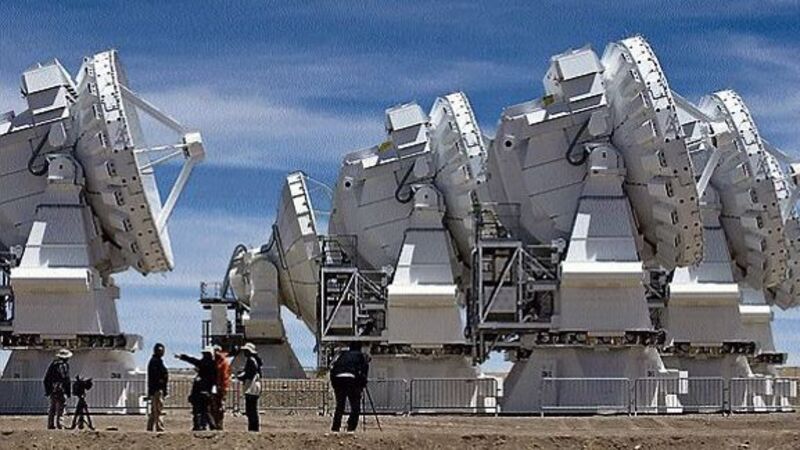Giant space observatory to probe Big Bang light

The Atacama Large Millimeter/submillimeter Array, or Alma, will search for clues about the dawn of the cosmos — from the coldest gases and dust where galaxies are formed to the energy produced by the Big Bang.
It is so powerful, the telescope will be able to look through the dense dust clouds of deep space, allowing astronomers a glimpse of galaxies from 12bn years ago.
Alma also reaches farther than any other radio telescope and has captured images different from anything seen before by visible-light and infrared telescopes. The $1.5bn (€1.15bn) project is jointly funded by the US, Canada, Japan, and Europe.
It is an engineering triumph that launches Chile to the forefront of ground-based space exploration.
“What is so very special about this place is that, right here above our heads, there is virtually no water vapour. There is just so little that whatever light is emitted from a heavenly body, galaxy or star, it gets here with no interference” said Gianni Marconi, an astronomer with Alma.
“And this is the largest observatory that has ever been built,” Marconi underscored proudly.
Alma is a joint effort among North American, European and Asian agencies.
And when scientists went looking for a place to put this world’s biggest ground array of telescopes, they looked for a spot that was high altitude, low humidity, sunny, and boasting fairly easy logistical access.
At Llano Chajnantor, on a plain on a mountain near Chile’s border with Bolivia, and near the tourist town of San Pedro de Atacama, they got what they were looking for and more.
When scientists tested for humidity with ultra-sensitive equipment, they at first thought it had broken because they could not believe how low the humidity was.
As there is virtually no humidity to get in the way, the Alma’s 66 antennas can glimpse at things in the darkest and remotest regions of the universe.
“The scientific community wants to use Alma in its research on star formation, the birth of planets and not just what is happening in our solar system, but also on how the system was created after the Big Bang,” Alma director Thijs de Graaw said.
“It is a revolution in the history of the universe in the realm of millimetric and sub-millimetric waves, which can look through clouds of dust and focus on the formation of stars themselves.
“Telescopes cannot see what is happening inside these clouds. With Alma, we can. And that is like opening a new window,” Mr de Graaw said.
Astronomers are preparing for a bonanza of discovery. Using the submillimeter wavelength — shorter than radio waves, but longer than visible light — permits astronomers to look at the cold dust surrounding young stars, and watch planets come together.














